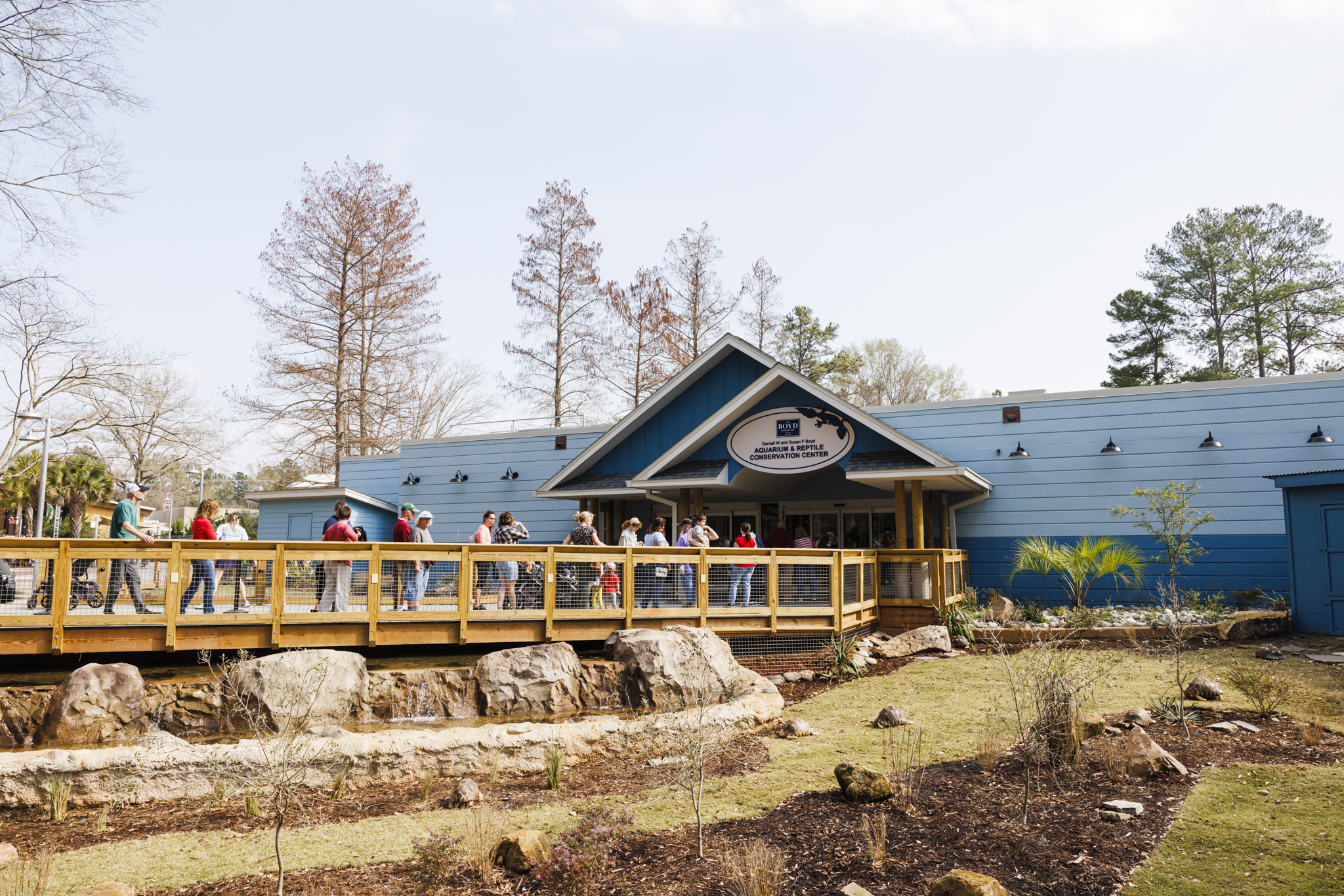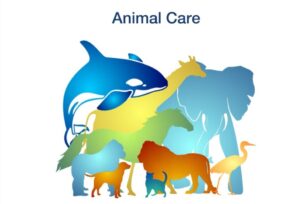Join us for a virtual tour of the Riverbanks Zoo & Garden’s Darnall W. and Susan F. Boyd Aquarium & Reptile Conservation Center (ARCC), hosted by Lochlan Wooten, Chief Operating Officer and Christie Vondrak, Chief Administrative Officer.
An extensive renovation of a 30-year-old building, ARCC is now home to Riverbanks Zoo and Garden’s most diverse population of animals. Terrestrial and aquatic conservation labs, a jellyfish wall, an octopus tank, and climate zones including deserts, tropics, and South Carolina temperate forests create a multi-sensory, immersive journey through biomes of the world. By highlighting species of critical local and global conservation importance, ARCC tells a compelling story that inspires guests to join Riverbanks Zoo and Garden in taking action to save wild animals and wild places.
Key Points and Innovations
Diversity of Thought Matters.
The design of ARCC was the most inclusive design process in the history of Riverbanks Zoo and Garden. In an intentional cultural shift, voices at all levels and from all departments of the organization were a part of the journey from the beginning. Lochlan and Christie shared that this had its challenges but also extreme benefits. While not all choices aligned with all feedback and anxiety and stress was still palpable at times, transparency in the process and the foundation for decisions was integral to building staff buy in. This was validated in a wildly successful staff preview night, when over 600 team members and their families celebrated the opening of ARCC.
In TESSERE Zoos’ experience, many organizations’ exhibit planning teams include the usual cast of characters – CEO’s, Directors, Vice Presidents, and Curators from animal care, operations, and occasionally learning engagement and guest experience. This can lead to skepticism and mistrust in staff at foundational levels of the organization, the very people who will be integral to the success and operation of the final exhibit. While it is impractical and even counterproductive to involve everyone in all stages of design, leaders of Zoos & Aquariums may consider an early conversation with their designers to build intentional opportunities for expanded staff engagement and communication into the process.
Endeavor to Do Less, Better.
In the early stages of concept design, the team at Riverbanks Zoo and Garden made the challenging choice to move some of its residents to other Zoos and Aquariums to allow expanded space for fewer animals in the redesigned Aquarium and Reptile Conservation Center. This was a difficult and highly personal discussion, as many of the Zoo’s animal care professionals were deeply invested in individual animals and species. They persisted, and these conversations remained grounded in the ARCC’s goal of exceptional wellbeing for species of all kinds. Early observations indicate encouraging outcomes. Breeding behaviors have increased in many species, guests and staff are witnessing higher levels of engagement and natural behavior, animals are thriving in mixed species habitats and making use of multi-dimensional space, etc. Among many examples, Lochlan shared that in an exhibit that is home to timber rattlesnakes, corn snakes, and copperheads, the corn snakes have laid two clutches of viable eggs, a great improvement from historical attempts. Multi-dimensional perching and plants in a habitat for blue-tongued skinks, frilled lizards, and bearded dragons has resulted in increased activity and breeding in two of the three species, making this habitat a guest and staff favorite.
The temptation in exhibit design is often to incorporate as many guest, staff, and donor favorites as possible, but Riverbanks Zoo and Garden shows us that sometimes, doing less is better.
Invite Guests to Be Part of the Story of Conservation.
In addition to enhanced animal wellbeing, Riverbanks Zoo and Garden was clear on another goal – to inspire and empower its guests to join them in the conservation of wild life and wild places. At the intersection of the human and animal experience, Zoos and Aquariums are uniquely positioned to move communities to action. Historically, conservation work was done behind the scenes at Riverbanks Zoo and Garden, but ARCC showcases this work through expansive glass windows into two conservation labs – the coral lab, which supports Florida Reef Tract coral conservation and a terrestrial lab, supporting populations of geckos from around the globe. This peek into the science of conservation has fascinated even ARCC’s youngest guests and may plant a seed in the next Jacques Cousteau, Ernest Everett Just, Sylvia Earle, or Wangari Maathai.
Behavior change science shows that providing an opportunity to take action after an experience like ARCC that builds empathy and awareness is a powerful step in developing a conservation ethos. Riverbanks Zoo and Garden did just that by incorporating a low-tech call to action at the exit, providing its guests with easy touch pads for indicating their support of conservation projects around the globe.
Deadlines Are Both Arbitrary and Necessary.
When asked what she would do differently in their next construction project, Lochlan reflected on deadlines; who sets them, what is driving them, and what is sacrificed to meet them? While deadlines serve an important purpose in planning and coordinating complex projects and providing a sense of structure, prioritization, focus, and evaluation, they can also be arbitrary or imposed simply to create a sense of urgency. To avoid undue stress and pressure on individuals and teams, it is important for project leaders to develop a clear rationale for a project schedule and strike a balance between setting realistic, meaningful deadlines that promote productivity while avoiding overly ambitious schedules.
Renovation Can Be a Path to Sustainability.
In an age of innovation in sustainable practices and technology, renovating an existing building can seem incongruous with an organization’s sustainability goals. However, while renovating existing buildings may not be feasible or appropriate in every situation, there is a saying that “the greenest building is the one already built”. Renovation can be a pathway to sustainability by preserving resources through reduced demand for new construction materials, utilizing existing site infrastructure and utilities, and lessening construction waste.
Riverbanks Zoo and Garden seized opportunities to retrofit with energy-efficient technologies and materials where possible but a key strategy for energy use reduction was intentionality in habitat orientation and species selection for each environment. For instance, the now desert biome was historically a rainforest environment, but an energy-use analysis led to its transformation, and this has proven to be a more appropriate use of space. Animals here are well adapted to the expected conditions in the desert biome; the Cayman Island blue iguanas have even been seen basking in the rays of sun shining through the skylight above.
The Darnall W. and Susan F. Boyd Aquarium & Reptile Conservation Center was designed by TESSERE Zoos. See more pictures here.




